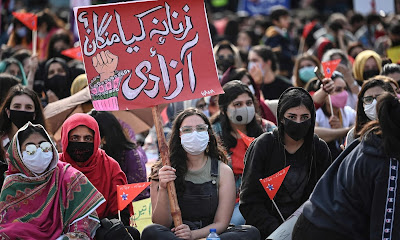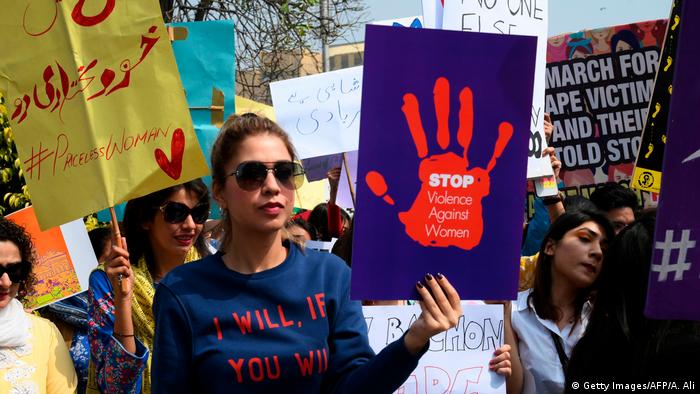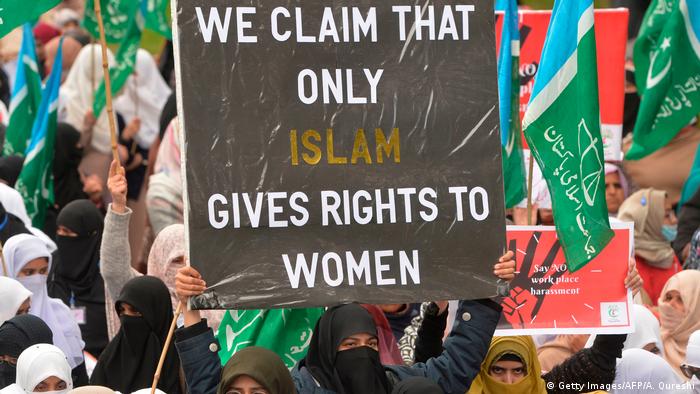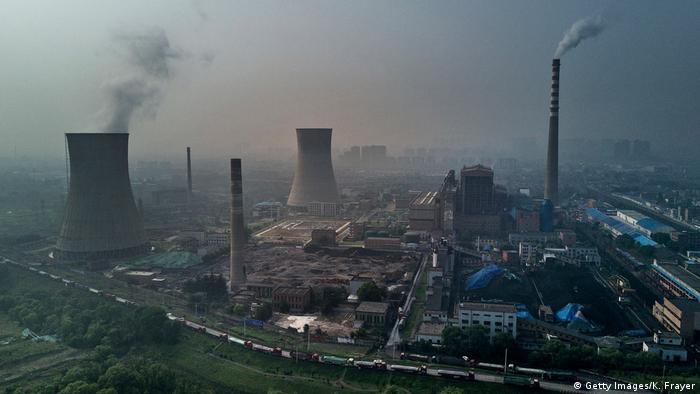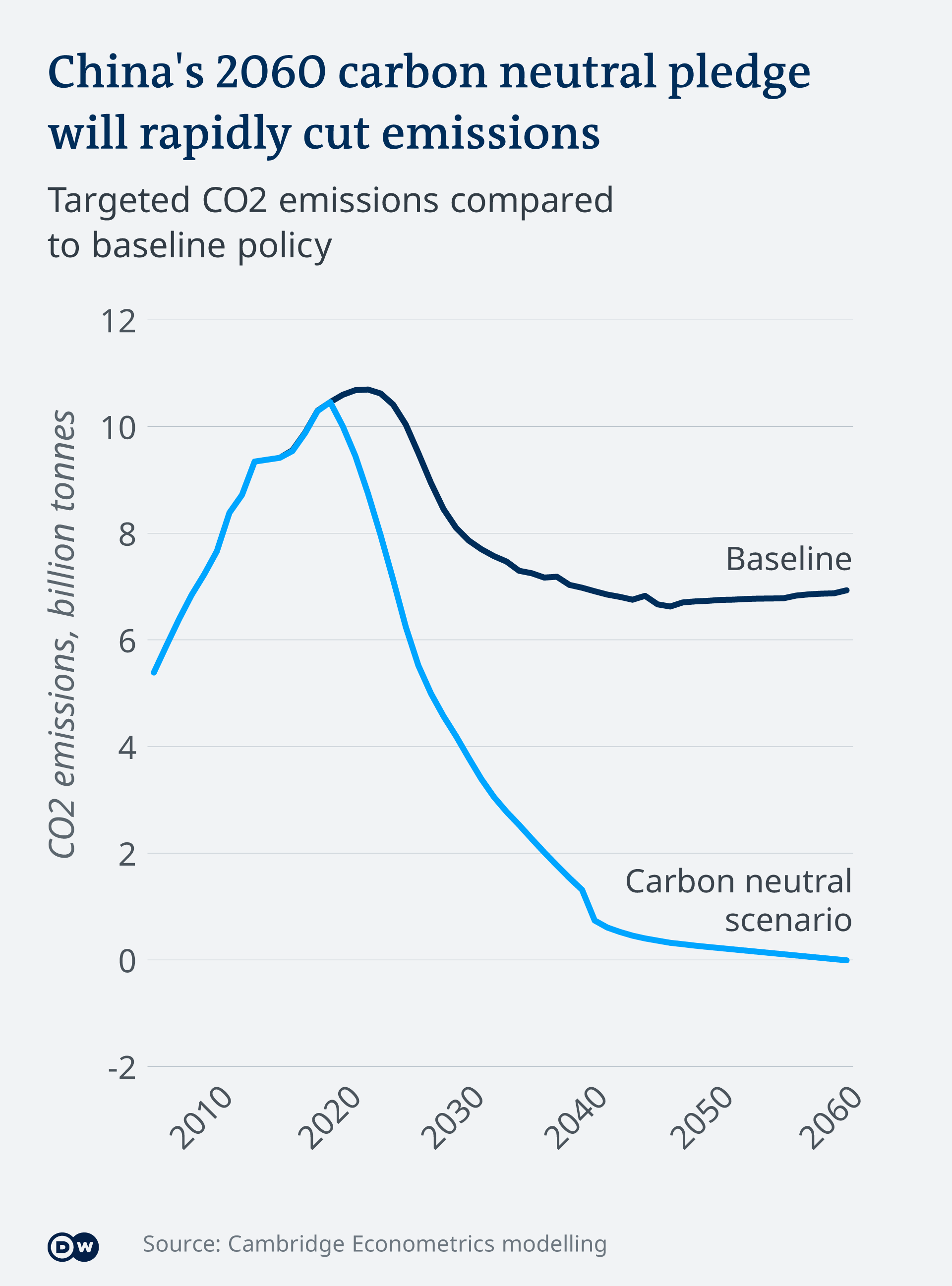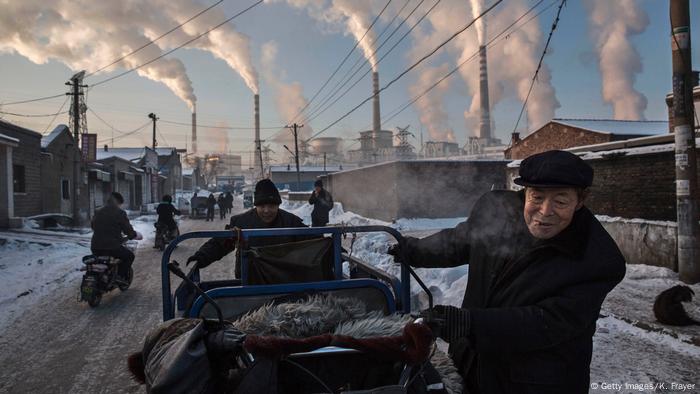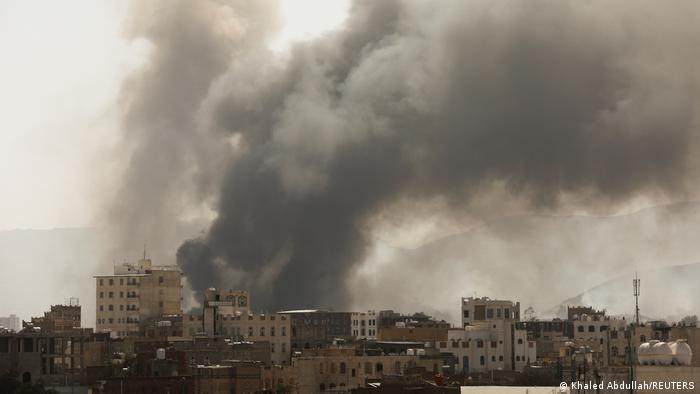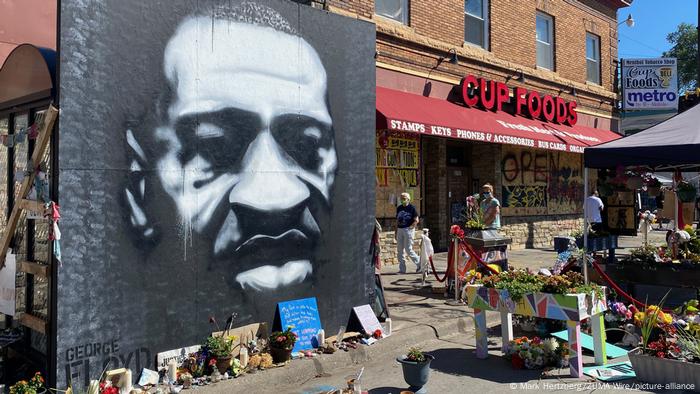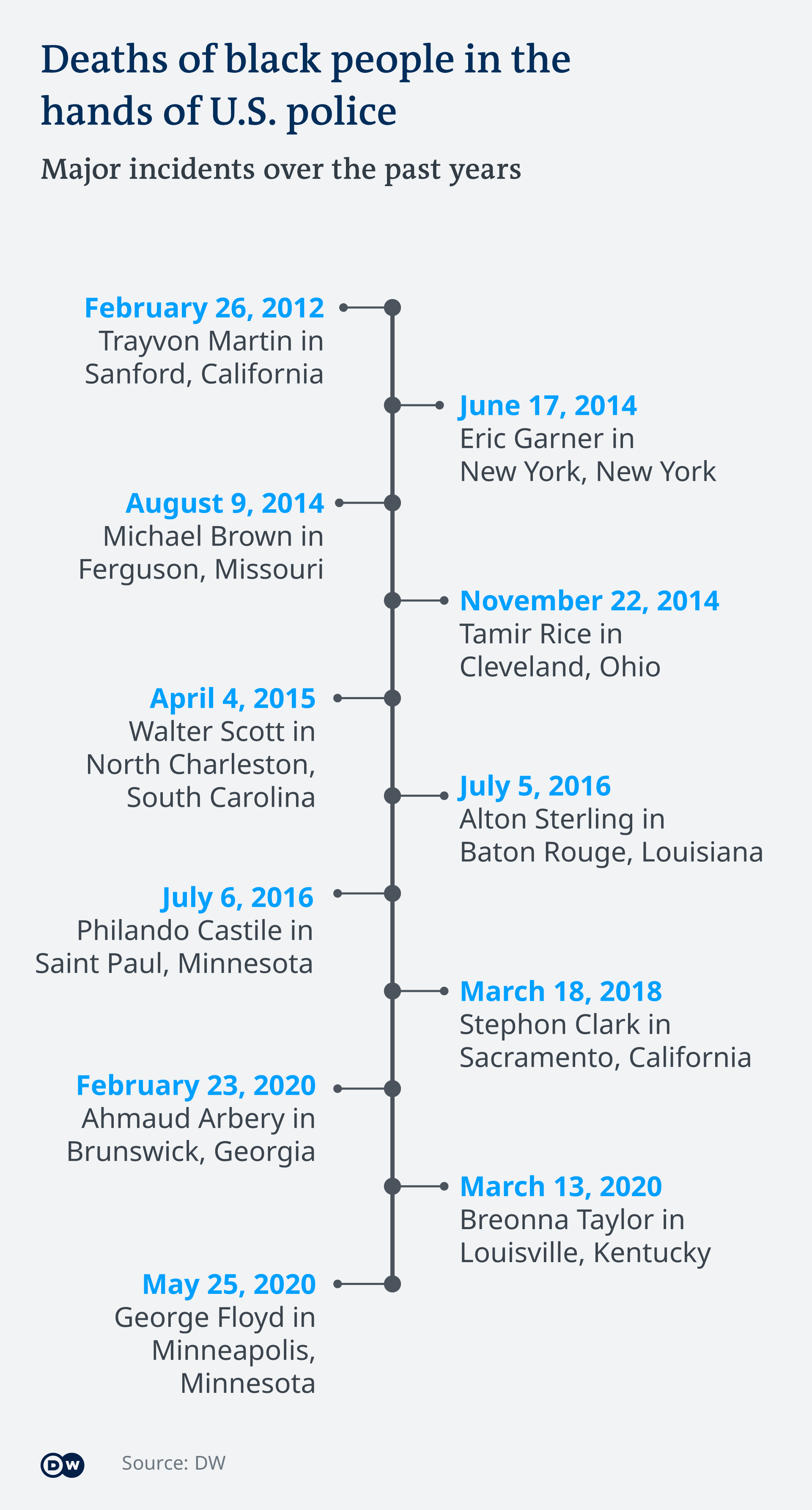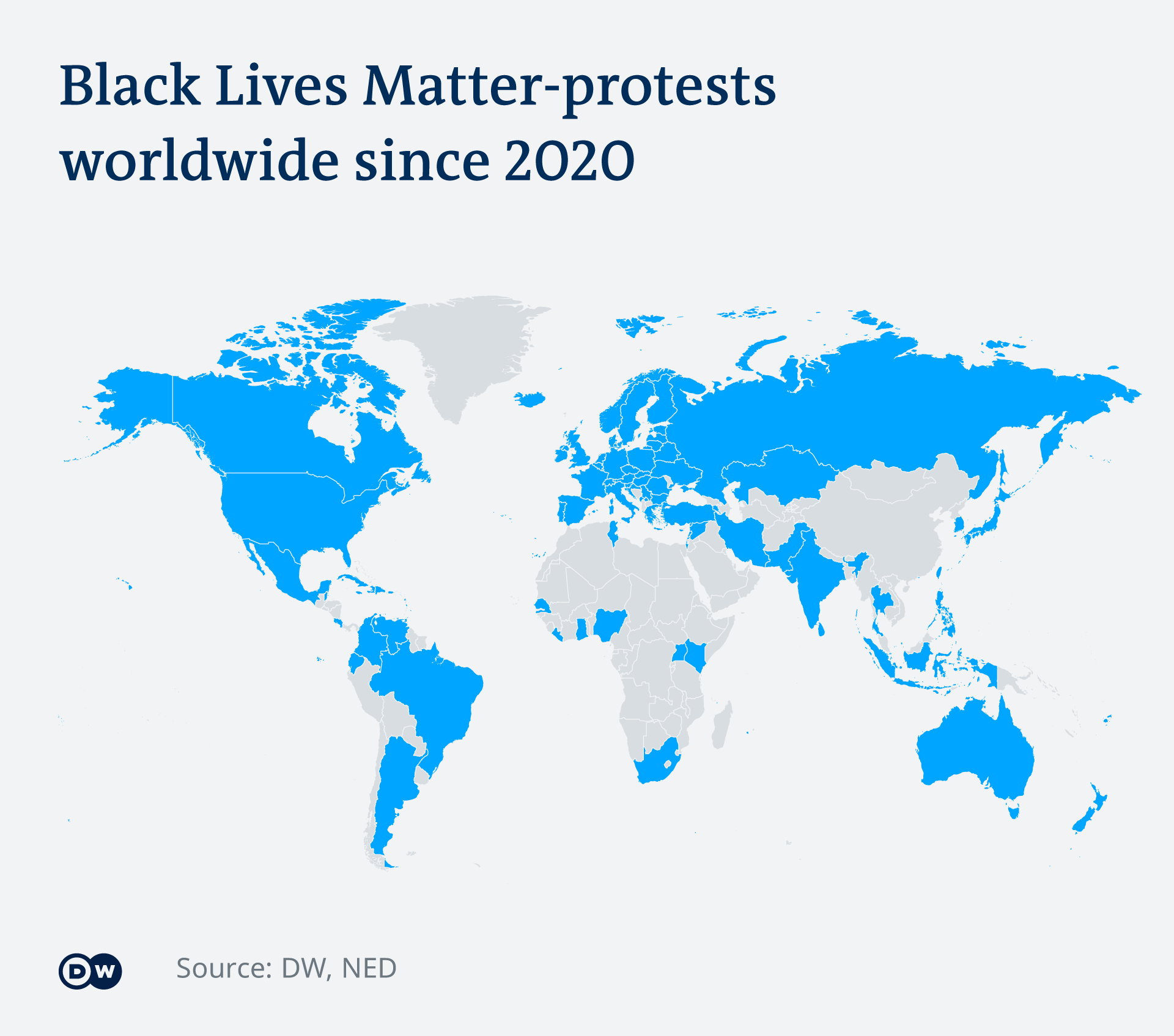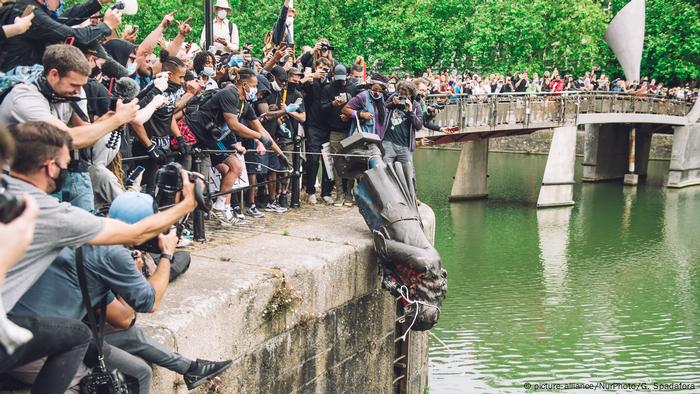LONG READ

Women in South Asia: Hostile encounters
Separated by borders, female journalists from Pakistan to Bangladesh have similar harrowing stories of abuse and threats to share.
In the crossfire
By Sumaira Jajja
Women journalists in Pakistan work in a hostile environment; only the fittest can survive.
“SOMETIMES I think they just wanted to scare me, but then I think maybe they wanted me dead,” says Bisma*, a journalist well known for her progressive views. It was one evening in February 2019 when several shots were fired right outside her house. She has never spoken about the incident to anyone except her immediate family, her boss and the head of the media company she works for — all of whom believe it was due to her reporting.
It had been a year since Bisma had done a particular story and started getting threatening calls telling her to “watch out”, the tone in each subsequent call turning more aggressive. “I never thought they would show up at my doorstep,” she says. Fearing further repercussions, she kept quiet, and has since then drastically cut down her social media presence. “The message was pretty clear.”
Such ‘messages’ have become increasingly common, and even more deadly. Over the years, Pakistan has earned a reputation of being a hard country for journalists. At least 61 reporters — all men — have been killed in the line of duty since 1992, according to the Committee to Protect Journalists. It ranked 145th out of 180 countries in Reporters Without Borders’ World Press Freedom Index 2020. While attacks on media men make it into the news and are discussed in appropriate forums, the nature of such attacks on women journalists, amplified by the ingrained misogyny of a patriarchal social structure, is very different.
A survey on online violence against women journalists by the International Centre for Journalists and Unesco notes that “online violence targeting women journalists manifests itself in a variety of ways, but it has a number of common characteristics. It is networked, it radiates and it is intimate: In detail and delivery, the threats are personal. They arrive on mobile phone screens first thing in the morning and last thing at night, and they are often highly sexualised.”
Elsewhere, the report states: “There are three converging online threats currently confronting women journalists – misogynistic harassment and abuse, orchestrated disinformation campaigns that exploit misogynistic narratives and digital privacy and security threats that increase physical risks associated with online violence.”
Most women journalists Dawn reached out to say reporting is the easiest part. Far more difficult is the continuous battle to create and hold onto spaces within male-dominated newsrooms and public places while fighting misinformation, deeply personal attacks and misogyny — both offline and online — which is overwhelming some of the most courageous and dedicated women journalists in Pakistan.
On Aug 12 last year, a group of women journalists issued a statement against government-affiliated social media accounts and supporters. “Vicious attacks through social media are being directed at women journalists and commentators in Pakistan, making it incredibly difficult for us to carry out our professional duties,” the statement said, adding: “In what is certainly a well-defined and coordinated campaign, personal details of women journalists and analysts have been made public. To further discredit, frighten and intimidate us, we are referred to as peddlers of ‘fake news’, ‘enemy of the people’ and accused of taking bribes (often termed as ‘paid’ journalists or lifafas).”
The statement led to another round of virulent online abuse and harassment that was enough to make most women journalists — many of whom had not signed the petition fearing a backlash — worry that these threats could translate into real attacks.
On Sep 9, nearly 150 women journalists signed a public petition to endorse “What our fellow colleagues have put on record on 12/08/2020, and widen the scope to reflect the magnitude and degree of trauma being experienced by women in media.
“A journalist’s criticism of any given policy of PTI or of political parties including PML-N, PPP, religious parties and accounts affiliating themselves with state institutions may also unleash a barrage of abuse.”
The petition noted that political parties and their supporters who indulged in “vile and vicious attacks online” were “impacting their work, mental well-being and security”.
“If there was a World Cup for getting trolled, I would have won it,” quips Asma Shirazi, a signatory to the petition. “The way a virus spreads, this nasty abuse has multiplied the same way. What has happened in the last three years has been unprecedented. Zuban band ho jaye kisi tareeqay sey [our mouths should be gagged somehow].”


Women in South Asia: Hostile encounters
Separated by borders, female journalists from Pakistan to Bangladesh have similar harrowing stories of abuse and threats to share.
In the crossfire
By Sumaira Jajja
Women journalists in Pakistan work in a hostile environment; only the fittest can survive.
“SOMETIMES I think they just wanted to scare me, but then I think maybe they wanted me dead,” says Bisma*, a journalist well known for her progressive views. It was one evening in February 2019 when several shots were fired right outside her house. She has never spoken about the incident to anyone except her immediate family, her boss and the head of the media company she works for — all of whom believe it was due to her reporting.
It had been a year since Bisma had done a particular story and started getting threatening calls telling her to “watch out”, the tone in each subsequent call turning more aggressive. “I never thought they would show up at my doorstep,” she says. Fearing further repercussions, she kept quiet, and has since then drastically cut down her social media presence. “The message was pretty clear.”
Such ‘messages’ have become increasingly common, and even more deadly. Over the years, Pakistan has earned a reputation of being a hard country for journalists. At least 61 reporters — all men — have been killed in the line of duty since 1992, according to the Committee to Protect Journalists. It ranked 145th out of 180 countries in Reporters Without Borders’ World Press Freedom Index 2020. While attacks on media men make it into the news and are discussed in appropriate forums, the nature of such attacks on women journalists, amplified by the ingrained misogyny of a patriarchal social structure, is very different.
A survey on online violence against women journalists by the International Centre for Journalists and Unesco notes that “online violence targeting women journalists manifests itself in a variety of ways, but it has a number of common characteristics. It is networked, it radiates and it is intimate: In detail and delivery, the threats are personal. They arrive on mobile phone screens first thing in the morning and last thing at night, and they are often highly sexualised.”
Elsewhere, the report states: “There are three converging online threats currently confronting women journalists – misogynistic harassment and abuse, orchestrated disinformation campaigns that exploit misogynistic narratives and digital privacy and security threats that increase physical risks associated with online violence.”
Most women journalists Dawn reached out to say reporting is the easiest part. Far more difficult is the continuous battle to create and hold onto spaces within male-dominated newsrooms and public places while fighting misinformation, deeply personal attacks and misogyny — both offline and online — which is overwhelming some of the most courageous and dedicated women journalists in Pakistan.
On Aug 12 last year, a group of women journalists issued a statement against government-affiliated social media accounts and supporters. “Vicious attacks through social media are being directed at women journalists and commentators in Pakistan, making it incredibly difficult for us to carry out our professional duties,” the statement said, adding: “In what is certainly a well-defined and coordinated campaign, personal details of women journalists and analysts have been made public. To further discredit, frighten and intimidate us, we are referred to as peddlers of ‘fake news’, ‘enemy of the people’ and accused of taking bribes (often termed as ‘paid’ journalists or lifafas).”
The statement led to another round of virulent online abuse and harassment that was enough to make most women journalists — many of whom had not signed the petition fearing a backlash — worry that these threats could translate into real attacks.
On Sep 9, nearly 150 women journalists signed a public petition to endorse “What our fellow colleagues have put on record on 12/08/2020, and widen the scope to reflect the magnitude and degree of trauma being experienced by women in media.
“A journalist’s criticism of any given policy of PTI or of political parties including PML-N, PPP, religious parties and accounts affiliating themselves with state institutions may also unleash a barrage of abuse.”
The petition noted that political parties and their supporters who indulged in “vile and vicious attacks online” were “impacting their work, mental well-being and security”.
“If there was a World Cup for getting trolled, I would have won it,” quips Asma Shirazi, a signatory to the petition. “The way a virus spreads, this nasty abuse has multiplied the same way. What has happened in the last three years has been unprecedented. Zuban band ho jaye kisi tareeqay sey [our mouths should be gagged somehow].”

Asma Shirazi.
Host of a flagship political talk show on Aaj News and one of the country’s top rated anchors, Shirazi left PTV to join Geo TV in 2002 when there were hardly any women doing political reporting. “In 2007, during Musharraf’s rule, I was banned from TV along with some others. Back then, we would get threats, someone would follow us or a message would be delivered via messengers, but all records were smashed after 2011 when social media especially Twitter became big.”
Shirazi shares incidents of fake news and propaganda against her which not only hurt her credibility but also caused her immense mental stress. “There is an extensive campaign to discredit pro-democracy voices. I decided intentionally to let my voice be heard and push back,” she says. “I have been a victim of fake news so often, I have gotten used to it. My private pictures are often doctored and leaked. I can’t fight with the forces [behind these attacks], all I can do is stand with the ideology I believe in.”
Attacks and Harassment: The Impact on Female Journalists and Their Reporting, a 2020 report based on a global survey by the International Women’s Media Foundation and co-authored by Troll Busters, found that out of the 597 respondents, a majority had been threatened, harassed or physically attacked as a result of the work they do in the journalism or media field.
This is the first of several forthcoming cross-border collaborations with stories from Pakistan, India, Bangladesh and Nepal.
“Sixty-three per cent indicated they had been threatened or harassed online, 58pc indicated they had been threatened or harassed in person while 26pc indicated they had been physically attacked,” the report says. “One in 10 respondents has experienced a death threat in the past year.”
“For women in Pakistan, there is no safe space,” contends Gharidah Farooqi, a popular current affairs talk show host on NewsOne, who says she was the first female journalist in Pakistan to file a complaint of cybercrime with the FIA. Abuses hurled her way include allegations of extra marital affairs with political figures. “During the 2014 dharna, accounts associated with PTI ran a campaign against me and I was also physically attacked while reporting on the sit-in,” she says. According to her, she was even the target of an organised smear campaign by a well-known female PTI legislator who later became a minister of state.

Host of a flagship political talk show on Aaj News and one of the country’s top rated anchors, Shirazi left PTV to join Geo TV in 2002 when there were hardly any women doing political reporting. “In 2007, during Musharraf’s rule, I was banned from TV along with some others. Back then, we would get threats, someone would follow us or a message would be delivered via messengers, but all records were smashed after 2011 when social media especially Twitter became big.”
Shirazi shares incidents of fake news and propaganda against her which not only hurt her credibility but also caused her immense mental stress. “There is an extensive campaign to discredit pro-democracy voices. I decided intentionally to let my voice be heard and push back,” she says. “I have been a victim of fake news so often, I have gotten used to it. My private pictures are often doctored and leaked. I can’t fight with the forces [behind these attacks], all I can do is stand with the ideology I believe in.”
Attacks and Harassment: The Impact on Female Journalists and Their Reporting, a 2020 report based on a global survey by the International Women’s Media Foundation and co-authored by Troll Busters, found that out of the 597 respondents, a majority had been threatened, harassed or physically attacked as a result of the work they do in the journalism or media field.
This is the first of several forthcoming cross-border collaborations with stories from Pakistan, India, Bangladesh and Nepal.
“Sixty-three per cent indicated they had been threatened or harassed online, 58pc indicated they had been threatened or harassed in person while 26pc indicated they had been physically attacked,” the report says. “One in 10 respondents has experienced a death threat in the past year.”
“For women in Pakistan, there is no safe space,” contends Gharidah Farooqi, a popular current affairs talk show host on NewsOne, who says she was the first female journalist in Pakistan to file a complaint of cybercrime with the FIA. Abuses hurled her way include allegations of extra marital affairs with political figures. “During the 2014 dharna, accounts associated with PTI ran a campaign against me and I was also physically attacked while reporting on the sit-in,” she says. According to her, she was even the target of an organised smear campaign by a well-known female PTI legislator who later became a minister of state.

Gharidah Farooqi.
Following the deadly attack on two Christchurch mosques in New Zealand, there were reports that the killer had earlier travelled to Pakistan. When Farooqi tweeted a CNN story about this, a storm of abuse rained down on her, calling her traitor and demanding she be tried for treason. In that case too, she alleges, a PTI supporter led the charge. Once again, she went to the FIA. However, by this time the online harassment was no longer confined to Twitter and Facebook. “I did not step outside the house for three months,” she recalls.
Many women journalists tell Dawn that whenever they write a political story or even tweet an opinion deemed unfavourable to the PTI or the other parties, the security establishment or the corporate sector, they are mercilessly trolled. The backlash, which ranges from threatening phone calls to doxxing and, in the case of political trolling, is amplified if verified party accounts jump in. The prospect of someone recognising them in public and acting on those threats is frightening enough to induce self-censorship.
Ailia Zehra, a Lahore-based journalist and managing editor of Naya Daur, a web-based news portal, agrees that the likelihood of online physical and sexual threats translating into real-time events is very high for female reporters. Fortunately, unlike Shirazi and Farooqi, Zehra is not a household name or an easily recognisable face, except by one of her 20,000 online followers. But that has not made her feel any safer.

Following the deadly attack on two Christchurch mosques in New Zealand, there were reports that the killer had earlier travelled to Pakistan. When Farooqi tweeted a CNN story about this, a storm of abuse rained down on her, calling her traitor and demanding she be tried for treason. In that case too, she alleges, a PTI supporter led the charge. Once again, she went to the FIA. However, by this time the online harassment was no longer confined to Twitter and Facebook. “I did not step outside the house for three months,” she recalls.
Many women journalists tell Dawn that whenever they write a political story or even tweet an opinion deemed unfavourable to the PTI or the other parties, the security establishment or the corporate sector, they are mercilessly trolled. The backlash, which ranges from threatening phone calls to doxxing and, in the case of political trolling, is amplified if verified party accounts jump in. The prospect of someone recognising them in public and acting on those threats is frightening enough to induce self-censorship.
Ailia Zehra, a Lahore-based journalist and managing editor of Naya Daur, a web-based news portal, agrees that the likelihood of online physical and sexual threats translating into real-time events is very high for female reporters. Fortunately, unlike Shirazi and Farooqi, Zehra is not a household name or an easily recognisable face, except by one of her 20,000 online followers. But that has not made her feel any safer.

Ailia Zehra.
“When the Saudi crown prince was visiting, I wrote a report on censorship by news organisations [on the subject of Jamal Khashoggi’s murder],” says Zehra. “The next day I got a call from an untraceable number, asking how I could write something like this. He said in a threatening tone, ‘Our guest is visiting and this isn’t journalism, it’s yellow journalism’.”
The list of obscenities hurled her way, she maintains, is getting longer and longer. Sometimes, after tweeting something, she has to go offline for 48 hours until the verbal assault dies down. Restricting her Twitter notifications is another tactic, but that leaves her unable to get tips and feedback from readers.
Following a vlog she did on Ishaq Dar’s BBC interview in December 2020, Zehra says she was mercilessly trolled by the PTI’s official account. “They took out a portion of that video and edited it, making me sound like I was drunk. The result of all this is that we are now very careful at Naya Daur. Self-censorship has increased given that the number of red lines has multiplied.”
Hostile newsrooms
Many women reporters also describe the environment of the newsrooms as hostile; male journalists can be their female colleagues’ worst enemies.
Pakistan’s first female chief reporter and Karachi bureau chief Rafia Haider would certainly agree. With a career spanning 30 years at the Associated Press of Pakistan (APP), the state-run news agency, she has reported extensively on health, environment and human rights.
A mild-mannered single woman, she has also faced sexist and ageist remarks — most of all, unfortunately, from the men in her newsroom. Her male colleagues are not keen on taking directions from a woman chief reporter. “It has gone from bad to worse since I was made bureau chief again in 2020 [she was Pakistan’s and APP’s first female bureau chief a decade ago],” she contends. Haider has been repeatedly subjected to online and offline vilification campaigns. “Laughably enough, my colleagues recently sent a letter to Prime Minister Imran Khan, implying that I am a coronavirus-denier and am forcing them to work in a pandemic when all I was doing was following orders from the head office,” says Haider. A year away from retirement, she shares that these days she often contemplates quitting.
Similarly, Multan-based Rakshsanda Nayyer, a reporter with over two decades of experience at Nawai Waqt newspaper, accuses her colleagues of making it impossible for her to work. “I used to wake up in the middle of the night worrying what will happen to me.” As a young widow with small children, Nayyer would do additional work to boost her income. “Our publication gave us a decent commission if we got advertisers to pay for supplements. I also took on consultancies with various firms and this irked my colleagues. They would contact those companies [and malign me], and even send them anonymous letters casting aspersions on my character.”
One day she filed a story on challenges faced by female lawyers in her hometown, which ended up on the front page of Nawai Waqt Multan as well as in all other editions. “When I went to work, the beat reporter was furious and threatened to break my legs. ‘I will burn you, I will burn this face of yours that you go around with’ were his words,” she remembers. It took an intervention from several media colleagues to get the man to back off. “But the resident editor actually asked me why I was interfering with his beat.”
This ‘boys’ club’ mentality means that male journalists often do not support their female colleagues, thereby leaving them feeling victimised twice over. “Once I was doing a story on maternal health and talking to a pregnant woman in her home when her husband flashed me,” says a Quetta-based reporter. “His wife pretended like nothing had happened. As I tried to leave, he made inappropriate gestures. Next day, a male reporter who was related to the family I had visited said I should behave respectably and not entice men.”
Gharidah Farooqi, the current affairs talk show host mentioned earlier, minces no words about the newsroom issues that women journalists face. “Your colleagues will ask you for favours … sit down with us, have a cup of tea with us, party par chalien, sit in my car, extreme offers. The women who don’t oblige find their shifts or job descriptions changed without intimation.”
For female television reporters, stepping into the public domain also means facing crowds of leering men. “Someone will try to touch your back or bottom, grope you or scream loudly in your ear,” says Naheed*, a young TV journalist. “The worst are the cameramen who try to take advantage of new girls by offering to adjust their collar mic”. She remembers once pushing away a senior cameraman at a shoot when he tried to touch her neck, ostensibly while adjusting the mic. Similar experiences were narrated by other women reporters, who said complaining meant being labeled ‘difficult’ and losing out on choice assignments.
Maheen Usmani, a senior print journalist who became a television reporter in 2007, says that “something as simple as recording a package in a market can lead to being mobbed”. But the men, including her bosses, would downplay what happened, although they could see the crowd growing bigger and more aggressive in the footage. “When I would come back and sit through the edit, someone would still feel the need to remind me that the shots were not good enough.”
An independent journalist and documentary filmmaker, Sabin Agha has been at the receiving end of threats from non-state actors due to her reporting in Balochistan. She recalls how she feared for the well-being of her fixers who in turn were worried about her as she was on the agencies’ radar as well.
“When you talk about a threat or an attack, people who work with you will say: ‘What else were you expecting? Women like you have it coming.’ These words have a sexual connotation where they only see you as an object. For female journalists, there are limited avenues to share these fears,” she complains, asserting that the press clubs will not stand up for women journalists the way they do for men.
‘Stand your ground’
“Being invited for a cup of tea is one thing, but if you hear ‘we have booked a room,’ what is that supposed to mean?” asks Sadia Sehar Haideri, the country’s first female photojournalist who works for the APP. In 2001, her husband Aziz Ullah Haideri, a journalist with Reuters, was kidnapped and later killed by the Taliban in Afghanistan along with three other journalists. A young widow, Haideri had to take care of her two children while navigating a sea of sharks in the media world.
In 2005, Haideri joined APP after clearing the written test and interviews. “I was happy I’d got a government job since I was looking for stability.” But she got more than she bargained for, and the chai offers began to trickle in.
“I was harassed, targeted, propositioned by my in charge. Once the person realised I was not willing to go along, he would say to my face ‘saday kam de nai’ (she is of no use to us). Back in 2005, I didn’t want to stay back at the office in the evenings because it wasn’t safe.” As a result, she was denied good assignments and her work suffered.

“When the Saudi crown prince was visiting, I wrote a report on censorship by news organisations [on the subject of Jamal Khashoggi’s murder],” says Zehra. “The next day I got a call from an untraceable number, asking how I could write something like this. He said in a threatening tone, ‘Our guest is visiting and this isn’t journalism, it’s yellow journalism’.”
The list of obscenities hurled her way, she maintains, is getting longer and longer. Sometimes, after tweeting something, she has to go offline for 48 hours until the verbal assault dies down. Restricting her Twitter notifications is another tactic, but that leaves her unable to get tips and feedback from readers.
Following a vlog she did on Ishaq Dar’s BBC interview in December 2020, Zehra says she was mercilessly trolled by the PTI’s official account. “They took out a portion of that video and edited it, making me sound like I was drunk. The result of all this is that we are now very careful at Naya Daur. Self-censorship has increased given that the number of red lines has multiplied.”
Hostile newsrooms
Many women reporters also describe the environment of the newsrooms as hostile; male journalists can be their female colleagues’ worst enemies.
Pakistan’s first female chief reporter and Karachi bureau chief Rafia Haider would certainly agree. With a career spanning 30 years at the Associated Press of Pakistan (APP), the state-run news agency, she has reported extensively on health, environment and human rights.
A mild-mannered single woman, she has also faced sexist and ageist remarks — most of all, unfortunately, from the men in her newsroom. Her male colleagues are not keen on taking directions from a woman chief reporter. “It has gone from bad to worse since I was made bureau chief again in 2020 [she was Pakistan’s and APP’s first female bureau chief a decade ago],” she contends. Haider has been repeatedly subjected to online and offline vilification campaigns. “Laughably enough, my colleagues recently sent a letter to Prime Minister Imran Khan, implying that I am a coronavirus-denier and am forcing them to work in a pandemic when all I was doing was following orders from the head office,” says Haider. A year away from retirement, she shares that these days she often contemplates quitting.
Similarly, Multan-based Rakshsanda Nayyer, a reporter with over two decades of experience at Nawai Waqt newspaper, accuses her colleagues of making it impossible for her to work. “I used to wake up in the middle of the night worrying what will happen to me.” As a young widow with small children, Nayyer would do additional work to boost her income. “Our publication gave us a decent commission if we got advertisers to pay for supplements. I also took on consultancies with various firms and this irked my colleagues. They would contact those companies [and malign me], and even send them anonymous letters casting aspersions on my character.”
One day she filed a story on challenges faced by female lawyers in her hometown, which ended up on the front page of Nawai Waqt Multan as well as in all other editions. “When I went to work, the beat reporter was furious and threatened to break my legs. ‘I will burn you, I will burn this face of yours that you go around with’ were his words,” she remembers. It took an intervention from several media colleagues to get the man to back off. “But the resident editor actually asked me why I was interfering with his beat.”
This ‘boys’ club’ mentality means that male journalists often do not support their female colleagues, thereby leaving them feeling victimised twice over. “Once I was doing a story on maternal health and talking to a pregnant woman in her home when her husband flashed me,” says a Quetta-based reporter. “His wife pretended like nothing had happened. As I tried to leave, he made inappropriate gestures. Next day, a male reporter who was related to the family I had visited said I should behave respectably and not entice men.”
Gharidah Farooqi, the current affairs talk show host mentioned earlier, minces no words about the newsroom issues that women journalists face. “Your colleagues will ask you for favours … sit down with us, have a cup of tea with us, party par chalien, sit in my car, extreme offers. The women who don’t oblige find their shifts or job descriptions changed without intimation.”
For female television reporters, stepping into the public domain also means facing crowds of leering men. “Someone will try to touch your back or bottom, grope you or scream loudly in your ear,” says Naheed*, a young TV journalist. “The worst are the cameramen who try to take advantage of new girls by offering to adjust their collar mic”. She remembers once pushing away a senior cameraman at a shoot when he tried to touch her neck, ostensibly while adjusting the mic. Similar experiences were narrated by other women reporters, who said complaining meant being labeled ‘difficult’ and losing out on choice assignments.
Maheen Usmani, a senior print journalist who became a television reporter in 2007, says that “something as simple as recording a package in a market can lead to being mobbed”. But the men, including her bosses, would downplay what happened, although they could see the crowd growing bigger and more aggressive in the footage. “When I would come back and sit through the edit, someone would still feel the need to remind me that the shots were not good enough.”
An independent journalist and documentary filmmaker, Sabin Agha has been at the receiving end of threats from non-state actors due to her reporting in Balochistan. She recalls how she feared for the well-being of her fixers who in turn were worried about her as she was on the agencies’ radar as well.
“When you talk about a threat or an attack, people who work with you will say: ‘What else were you expecting? Women like you have it coming.’ These words have a sexual connotation where they only see you as an object. For female journalists, there are limited avenues to share these fears,” she complains, asserting that the press clubs will not stand up for women journalists the way they do for men.
‘Stand your ground’
“Being invited for a cup of tea is one thing, but if you hear ‘we have booked a room,’ what is that supposed to mean?” asks Sadia Sehar Haideri, the country’s first female photojournalist who works for the APP. In 2001, her husband Aziz Ullah Haideri, a journalist with Reuters, was kidnapped and later killed by the Taliban in Afghanistan along with three other journalists. A young widow, Haideri had to take care of her two children while navigating a sea of sharks in the media world.
In 2005, Haideri joined APP after clearing the written test and interviews. “I was happy I’d got a government job since I was looking for stability.” But she got more than she bargained for, and the chai offers began to trickle in.
“I was harassed, targeted, propositioned by my in charge. Once the person realised I was not willing to go along, he would say to my face ‘saday kam de nai’ (she is of no use to us). Back in 2005, I didn’t want to stay back at the office in the evenings because it wasn’t safe.” As a result, she was denied good assignments and her work suffered.

Saadia Sehar Haidari poses for a group photo along with male photographers after an official assignment.
One day she was asked to hand over her equipment on the pretext that she was being transferred to another department. “Next day I was stopped at the gate and informed I was no longer employed at APP,” she says. It took a court case that lasted over three years to be reinstated. During this time, she worked for Geo, Xinhua and international news agencies as a photographer — and that too an award-winning one.
“The men are not willing to accept women [journalists], let alone women photojournalists,” Haideri says, adding that despite a career spanning 20 years, she has yet to be given membership to the photojournalists’ association.
Iffat Hasan Rizvi is a Supreme Court reporter well known in the Urdu media for her sharp political analysis. She has been a frequent target of online trolling, even for some innocuous comments. Unfortunately, respect for women journalists is scant. For instance, she says, no matter how smart a woman is, she is expected to report on “mausam ka haal” (the weather). “One minute I’d be reporting on a major case in the SC and the next I’d get a call from work asking me to send a small report on the drizzle in Islamabad. When I took this up with the senior management, they said, ‘We always have women cover the weather’. Also, the minute a high-profile story breaks, it would be handed over to a male reporter,” complains Rizvi, but nevertheless iterates the importance of women reporters standing their ground.
As for unwelcome male advances, even the halls of justice offer little refuge. “A lawyer representing the government in the SC once grabbed my hand while handing me a document. I was stunned and disgusted. When I shared this with the male reporters, they took it very lightly and said ‘yeh sab tharki hotay hain’ and suggested that the next time I take a man along.”
Yasmeen Taha, editor of Ausaf magazine, is a rarity in Urdu journalism who went from showbiz reporting to current affairs. In fact, in recent years she has been at the receiving end of criticism from political parties for her weekly current affairs diary. When she was subjected to harassment at a leading Urdu newspaper, Taha and three other female journalists filed a complaint against a male colleague. But their initiative came to naught and she eventually left the job. “Harassment committees are led by handpicked individuals and they submit reports based on the management’s choice which can make the victim look like the villain,” she says. “When a harassment case is decided based on the victims’ looks and age, it shows something is really wrong with the men and women conducting the investigation.”

One day she was asked to hand over her equipment on the pretext that she was being transferred to another department. “Next day I was stopped at the gate and informed I was no longer employed at APP,” she says. It took a court case that lasted over three years to be reinstated. During this time, she worked for Geo, Xinhua and international news agencies as a photographer — and that too an award-winning one.
“The men are not willing to accept women [journalists], let alone women photojournalists,” Haideri says, adding that despite a career spanning 20 years, she has yet to be given membership to the photojournalists’ association.
Iffat Hasan Rizvi is a Supreme Court reporter well known in the Urdu media for her sharp political analysis. She has been a frequent target of online trolling, even for some innocuous comments. Unfortunately, respect for women journalists is scant. For instance, she says, no matter how smart a woman is, she is expected to report on “mausam ka haal” (the weather). “One minute I’d be reporting on a major case in the SC and the next I’d get a call from work asking me to send a small report on the drizzle in Islamabad. When I took this up with the senior management, they said, ‘We always have women cover the weather’. Also, the minute a high-profile story breaks, it would be handed over to a male reporter,” complains Rizvi, but nevertheless iterates the importance of women reporters standing their ground.
As for unwelcome male advances, even the halls of justice offer little refuge. “A lawyer representing the government in the SC once grabbed my hand while handing me a document. I was stunned and disgusted. When I shared this with the male reporters, they took it very lightly and said ‘yeh sab tharki hotay hain’ and suggested that the next time I take a man along.”
Yasmeen Taha, editor of Ausaf magazine, is a rarity in Urdu journalism who went from showbiz reporting to current affairs. In fact, in recent years she has been at the receiving end of criticism from political parties for her weekly current affairs diary. When she was subjected to harassment at a leading Urdu newspaper, Taha and three other female journalists filed a complaint against a male colleague. But their initiative came to naught and she eventually left the job. “Harassment committees are led by handpicked individuals and they submit reports based on the management’s choice which can make the victim look like the villain,” she says. “When a harassment case is decided based on the victims’ looks and age, it shows something is really wrong with the men and women conducting the investigation.”

Yasmeen Taha.
Lahore-based reporter and Chevening Fellow Gonila Hasnain carries the double burden of being a woman and a member of a minority community. Currently in the UK for her Masters’ degree, she says her marriage to a Muslim — an act legally and religiously allowed — irked many in the newsroom and press clubs, with her husband being called out for not converting her.
Over the course of her 15-year career, she says she has been repeatedly harassed by professional and political contacts. “Each and every proposition I refused, that person said to me, ‘You’re Christian, aren’t you, and making friends is nothing out of the ordinary in your community’.
“Once when I was on an assignment, the office transport broke down. I called an Uber and my colleague felt it was okay to sit in the back next to me. When he touched me inappropriately and I told him to stop, he said ‘Don’t you dress like this to attract male attention?’” When Hasnain lodged a complaint at the office, she says he had the audacity to call her a “choori” (a derogatory term for Punjabi Christians) and accuse her of making a pass at him. The outcome was predictable. “Men support men, then there was the religion issue. They said it was a ‘drama’ and that was that.”

Lahore-based reporter and Chevening Fellow Gonila Hasnain carries the double burden of being a woman and a member of a minority community. Currently in the UK for her Masters’ degree, she says her marriage to a Muslim — an act legally and religiously allowed — irked many in the newsroom and press clubs, with her husband being called out for not converting her.
Over the course of her 15-year career, she says she has been repeatedly harassed by professional and political contacts. “Each and every proposition I refused, that person said to me, ‘You’re Christian, aren’t you, and making friends is nothing out of the ordinary in your community’.
“Once when I was on an assignment, the office transport broke down. I called an Uber and my colleague felt it was okay to sit in the back next to me. When he touched me inappropriately and I told him to stop, he said ‘Don’t you dress like this to attract male attention?’” When Hasnain lodged a complaint at the office, she says he had the audacity to call her a “choori” (a derogatory term for Punjabi Christians) and accuse her of making a pass at him. The outcome was predictable. “Men support men, then there was the religion issue. They said it was a ‘drama’ and that was that.”

Gonila Hasnain with Asma Jahangir.
The ‘Protection Against Harassment of Women at the Workplace Act 2010’ stipulates that every organisation must adopt the Code of Conduct prescribed by the law and ensure it is displayed noticeably in languages understood by the majority of employees. Failure to do so is punishable by a Rs100,000 fine. In practice, many media houses are reluctant to comply with these directions.
Talking to Dawn, Provincial Ombudsman Sindh for Protection Against Harassment at Workplace retired Justice Shahnawaz Tariq says: “Journalists, including women reporters, like many others working in the private sector, do not enjoy legal protections from being easily terminated that are available to those working in the public sector if they file a complaint against harassment at the workplace. The fear of losing employment and possibly killing one’s career prospects acts as a deterrent which discourages women from coming forward.” Consider that over the years, 461 cases overall have been filed under the Harassment Act, 2010 with the provincial ombudsman, with 350 disposed. In all that time, only one case involving a media company and a female radio host has been lodged with the provincial ombudsman. The case was decided in her favour and the accused convicted.
No response was received from the office of the Federal Ombudsperson for Protection against Harassment of Women at Workplace Kashmala Tariq for this report.
Journalists in Pakistan as a whole are going through difficult times. Let alone the wholesale assault on freedom of speech by the authorities, salaries have been drastically cut and massive retrenchments have taken place in media organisations. For many women in this cohort, however, the situation is even more fraught with the trolling they face on a daily basis and the lack of support from male colleagues, who are in fact often part of the problem.
Press clubs remain male-dominated, with women journalists being grudgingly tolerated at on-site press conferences, in dining halls and token participation in meetings with government officials and donors. The ogling by their peers is enough to make most women uncomfortable, so are the lewd messages sent their way ‘accidentally’ by male journalists in reporters’ groups. Many women journalists say they are asked to leave the profession, else ‘grin and bear it’.
Back in the 2000s, standing alongside dozens of men at press conferences and events, a short-haired woman clad in t-shirt and baggy jeans could be seen with her camera and tripod stand, often elbowing her way in to get the perfect shot. That was Geo News cameraperson Syed Lalarukh. With her experience as a reporter and feature writer for Urdu publications, she was part of the original team at Geo. “Then I had the motivation to do great things,” she says.
Lala was everywhere. Many young media studies students wanted to join the media following her example. But inside the newsroom it was a different story, with male jealousy at its worst.
Now a shadow of her former self, Lalarukh says misogyny and political interference affected her career. “I covered bomb blasts, accidents and just about anything that cameramen did. Sometimes I would be the first person to arrive on the scene and get excellent footage.” At times, she would be abused and roughed up, more so than the men around her.
“In 2008, I was covering the attack at the city courts in Karachi when MQM workers spotted me. They got hold of me and snatched my camera. And then the beating started. No one stopped them,” she says. The attack left her with a fractured arm.
Lala went on to join other TV channels. But when salaries started getting delayed for months, she left journalism. Now she sells clothes. “My car serves as a pop-up stall, anywhere I see girls and women, I display the clothes,” she says. With an ailing mother and two pre-teen sisters at home, she says surviving on the bare minimum is nothing compared to that brutal assault where none came to extend her a hand.
On Aug 12, 2020, in response to the statement issued by the women journalists about the vile online attacks on them, Minister for Human Rights Shireen Mazari tweeted: “Disturbing to learn of women journalists being targeted and abused. Abusing women bec[ause] they are critical is never acceptable. Journalists do their job & to target them, especially gender-based abusive attacks on women journos, is absolutely unacceptable and disgusting.”
However, little has happened since then to show that this government is committed to improving the environment for women journalists in public and online spaces. Repeated attempts to contact Ms Mazari for comments on the subject did not receive any response.
For women in Pakistani media, most days are like climbing a personal Everest, navigating harsh terrain and bottlenecks, where the slightest misstep can put paid to one’s job, reputation and sanity. Their experiences of offline and online abuse are dismissed as ‘occupational hazards’. That is unacceptable. Pakistani social media is a disturbing reflection of a troubled society averse to differing opinions and obsessed with harming women in ways unimaginable — a glance through the Whatsapp messages and timelines of women journalists is proof enough.
They need assurance from their employers as well as from the state that when they share their fears and experiences of being doxxed, trolled, surveilled or physically attacked, they are not dismissed as being paranoid and asked to ‘toughen up’. Instead, their tormentors must be brought to book.
*Some names have been changed for the sake of privacy.
Header illustration by Reem Khurshid.
The ‘Protection Against Harassment of Women at the Workplace Act 2010’ stipulates that every organisation must adopt the Code of Conduct prescribed by the law and ensure it is displayed noticeably in languages understood by the majority of employees. Failure to do so is punishable by a Rs100,000 fine. In practice, many media houses are reluctant to comply with these directions.
Talking to Dawn, Provincial Ombudsman Sindh for Protection Against Harassment at Workplace retired Justice Shahnawaz Tariq says: “Journalists, including women reporters, like many others working in the private sector, do not enjoy legal protections from being easily terminated that are available to those working in the public sector if they file a complaint against harassment at the workplace. The fear of losing employment and possibly killing one’s career prospects acts as a deterrent which discourages women from coming forward.” Consider that over the years, 461 cases overall have been filed under the Harassment Act, 2010 with the provincial ombudsman, with 350 disposed. In all that time, only one case involving a media company and a female radio host has been lodged with the provincial ombudsman. The case was decided in her favour and the accused convicted.
No response was received from the office of the Federal Ombudsperson for Protection against Harassment of Women at Workplace Kashmala Tariq for this report.
Journalists in Pakistan as a whole are going through difficult times. Let alone the wholesale assault on freedom of speech by the authorities, salaries have been drastically cut and massive retrenchments have taken place in media organisations. For many women in this cohort, however, the situation is even more fraught with the trolling they face on a daily basis and the lack of support from male colleagues, who are in fact often part of the problem.
Press clubs remain male-dominated, with women journalists being grudgingly tolerated at on-site press conferences, in dining halls and token participation in meetings with government officials and donors. The ogling by their peers is enough to make most women uncomfortable, so are the lewd messages sent their way ‘accidentally’ by male journalists in reporters’ groups. Many women journalists say they are asked to leave the profession, else ‘grin and bear it’.
Back in the 2000s, standing alongside dozens of men at press conferences and events, a short-haired woman clad in t-shirt and baggy jeans could be seen with her camera and tripod stand, often elbowing her way in to get the perfect shot. That was Geo News cameraperson Syed Lalarukh. With her experience as a reporter and feature writer for Urdu publications, she was part of the original team at Geo. “Then I had the motivation to do great things,” she says.
Lala was everywhere. Many young media studies students wanted to join the media following her example. But inside the newsroom it was a different story, with male jealousy at its worst.
Now a shadow of her former self, Lalarukh says misogyny and political interference affected her career. “I covered bomb blasts, accidents and just about anything that cameramen did. Sometimes I would be the first person to arrive on the scene and get excellent footage.” At times, she would be abused and roughed up, more so than the men around her.
“In 2008, I was covering the attack at the city courts in Karachi when MQM workers spotted me. They got hold of me and snatched my camera. And then the beating started. No one stopped them,” she says. The attack left her with a fractured arm.
Lala went on to join other TV channels. But when salaries started getting delayed for months, she left journalism. Now she sells clothes. “My car serves as a pop-up stall, anywhere I see girls and women, I display the clothes,” she says. With an ailing mother and two pre-teen sisters at home, she says surviving on the bare minimum is nothing compared to that brutal assault where none came to extend her a hand.
On Aug 12, 2020, in response to the statement issued by the women journalists about the vile online attacks on them, Minister for Human Rights Shireen Mazari tweeted: “Disturbing to learn of women journalists being targeted and abused. Abusing women bec[ause] they are critical is never acceptable. Journalists do their job & to target them, especially gender-based abusive attacks on women journos, is absolutely unacceptable and disgusting.”
However, little has happened since then to show that this government is committed to improving the environment for women journalists in public and online spaces. Repeated attempts to contact Ms Mazari for comments on the subject did not receive any response.
For women in Pakistani media, most days are like climbing a personal Everest, navigating harsh terrain and bottlenecks, where the slightest misstep can put paid to one’s job, reputation and sanity. Their experiences of offline and online abuse are dismissed as ‘occupational hazards’. That is unacceptable. Pakistani social media is a disturbing reflection of a troubled society averse to differing opinions and obsessed with harming women in ways unimaginable — a glance through the Whatsapp messages and timelines of women journalists is proof enough.
They need assurance from their employers as well as from the state that when they share their fears and experiences of being doxxed, trolled, surveilled or physically attacked, they are not dismissed as being paranoid and asked to ‘toughen up’. Instead, their tormentors must be brought to book.
*Some names have been changed for the sake of privacy.
Header illustration by Reem Khurshid.





